
Do you need fresh or dried fenugreek leaves substitute because you can’t find one? After all, it’s a seasonal herb, so your local grocery can run out of it quickly. Perhaps you forgot to stock up and need to cook dinner already, so you need to use what’s available in your pantry and/or herb garden.
Let me help you out. Today, I’m sharing with you ingredients you can substitute for dry fenugreek, fresh fenugreek, and both.
Jump to:
Top 4 Fenugreek Substitutes
Whether you need to replace dry or fresh fenugreek leaves in your recipe, any of the following kitchen staples will work perfectly fine:
1. Maple Syrup
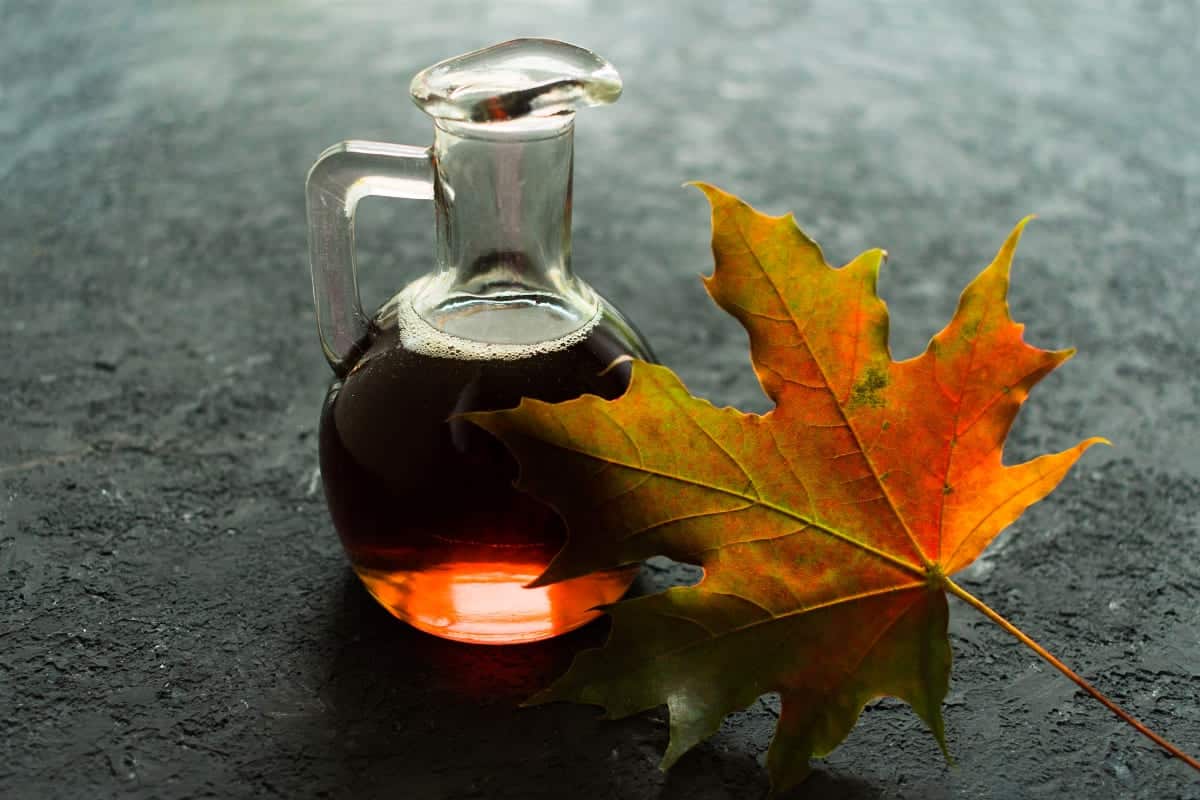

Are you surprised to see maple syrup listed as one of the best fenugreek substitutes? Well, most chefs and food enthusiasts describe fenugreek’s aroma and taste as similar to maple syrup.
However, I would like to note that we’re not referring to the common commercially available maple syrup products because they contain other ingredients like sugar. Rather, we’re talking about pure maple syrup.
Thus, always take some time to check the label of the maple syrup product you’re buying.
Going back to maple syrup as both a fresh and dried fenugreek leaf substitute, it will give your dish the same nutty flavor and aroma with a slight bitterness. However, maple syrup is slightly sweeter than fenugreek, which can affect your recipe’s overall balance of flavor.
So, always make sure you don’t add too much maple syrup to what you’re cooking or preparing. You will need to add your maple syrup gradually. I suggest starting with half the amount of the required fenugreek.
I must also remind you that you should only add maple syrup at the end of the cooking process. Unfortunately, it tends to lose its flavor and aroma as it cooks.
Best for: Maple syrup’s rich sweetness complements dishes like curries and stews, substituting for fenugreek leaves with its depth and hint of bitterness, adding complexity to Indian-inspired recipes.
2. Fresh and Dry Chinese Celery Leaves
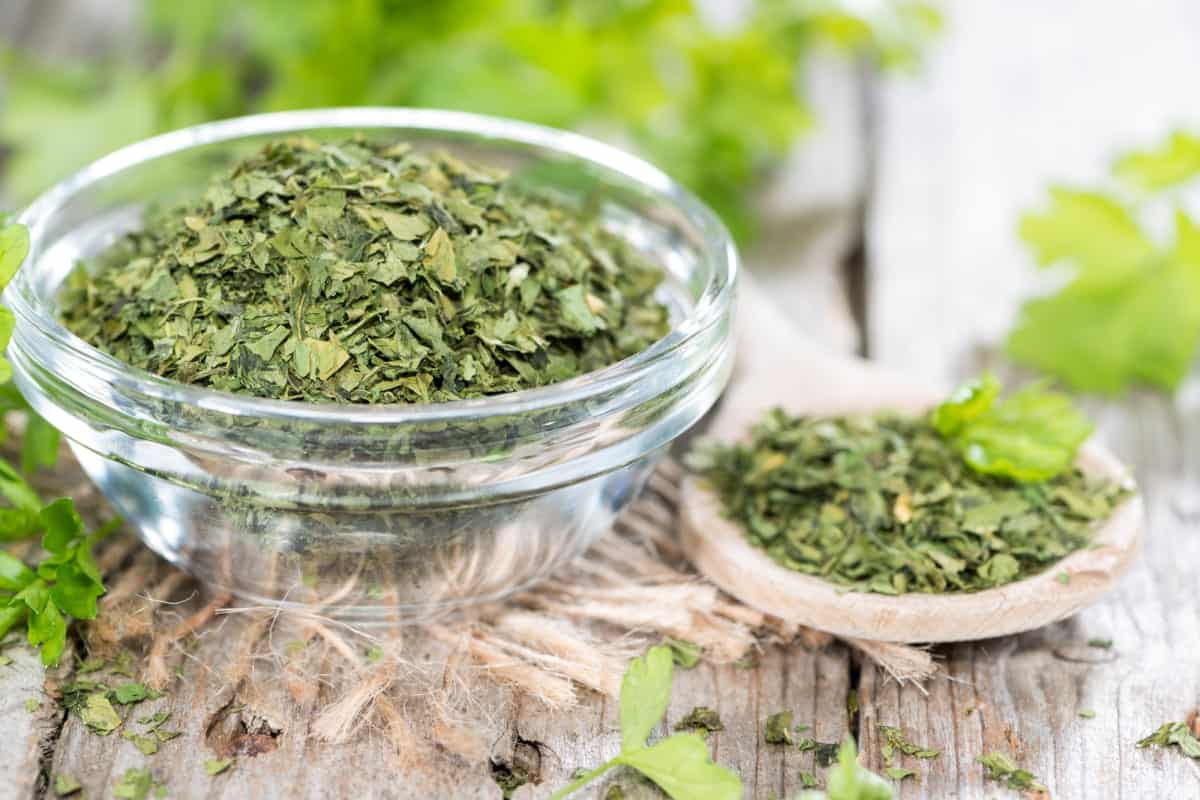

As an herb unknown to many home cooks, I’m sure most of you don’t have this in your kitchen and/or garden. But if you have time to shop before cooking, opt for Chinese celery leaves.
These leaves have a similar appearance, aroma, and bitter, nutty flavor as fenugreek leaves. However, it’s hotter or spicier. As such, I only suggest adding half a teaspoon of the leaves for every teaspoon of fenugreek.
Also, make sure to add the leaves at the end of the cooking process, as the longer you cook them, the more you bring out the bitter taste.
When using the fresh leaves, instead of the dry ones, as a dry fenugreek leaves substitute, make sure you dry them first. The quickest way to do it is in the microwave.
- Place two layers of paper towel on top of a microwave-safe plate and wash the leaves.
- Put the washed leaves on the plate you just prepared, making sure there’s enough space between them.
- Cover the leaves with a paper towel and place the plate inside your microwave.
- Set your appliance to high and the timer to one minute.
- Once done, check if the leaves can easily crumble between your fingers. If not, put them back in the microwave and set it to 20 seconds.
- If still not dry enough, repeat step number 5.
- Once dried, you can crush the dried leaves with your hands or use your mortar and pestle or spice grinder.
Best for: Fresh and dry Chinese celery leaves are excellent substitutes for fenugreek leaves in recipes like curries, marinades, and soups, providing a similar herbal and slightly bitter flavor profile to enhance savory dishes.
Related: Kasoori Methi Substitute: 10 Best Options for Indian Cooking
3. Fresh and Dry Celery Leaves
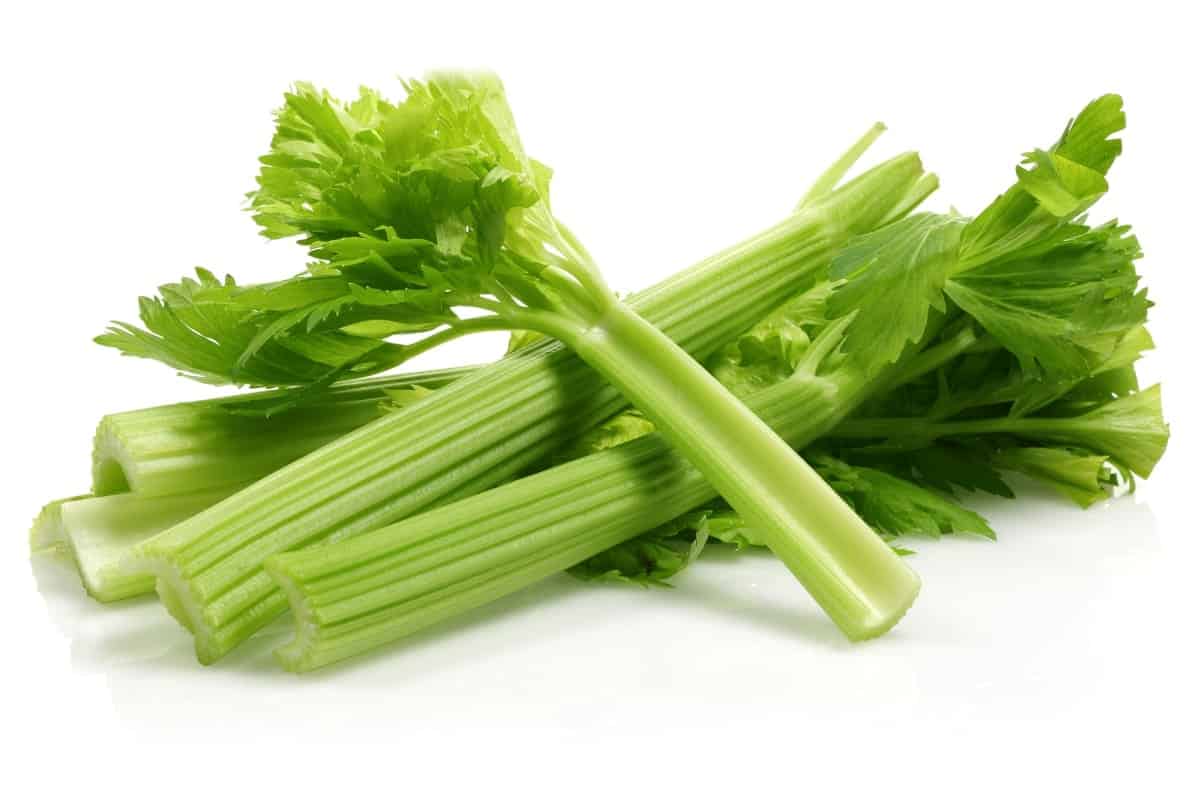

If you have a hard time looking for Chinese celery leaves or just don’t have the time to spare and the only thing you have is European celery, then go ahead and use its leaves. It also has a bitter taste but is milder than fenugreek.
To use, simply add the same amount of celery leaves as the recipe requires for fenugreek leaves. Like with the Chinese variety, make sure you add the ingredient toward the end of the cooking process.
Now, if you don’t have commercially prepared dried celery leaves, you can simply dry the fresh leaves in your microwave, following the same steps as above.
Best for: Fresh and dry celery leaves can serve as substitutes for fenugreek leaves in dishes like sauces, salads, and meat rubs, offering a mild herbal flavor that complements various cuisines, especially Mediterranean and Asian-inspired recipes.
4. Curry Powder
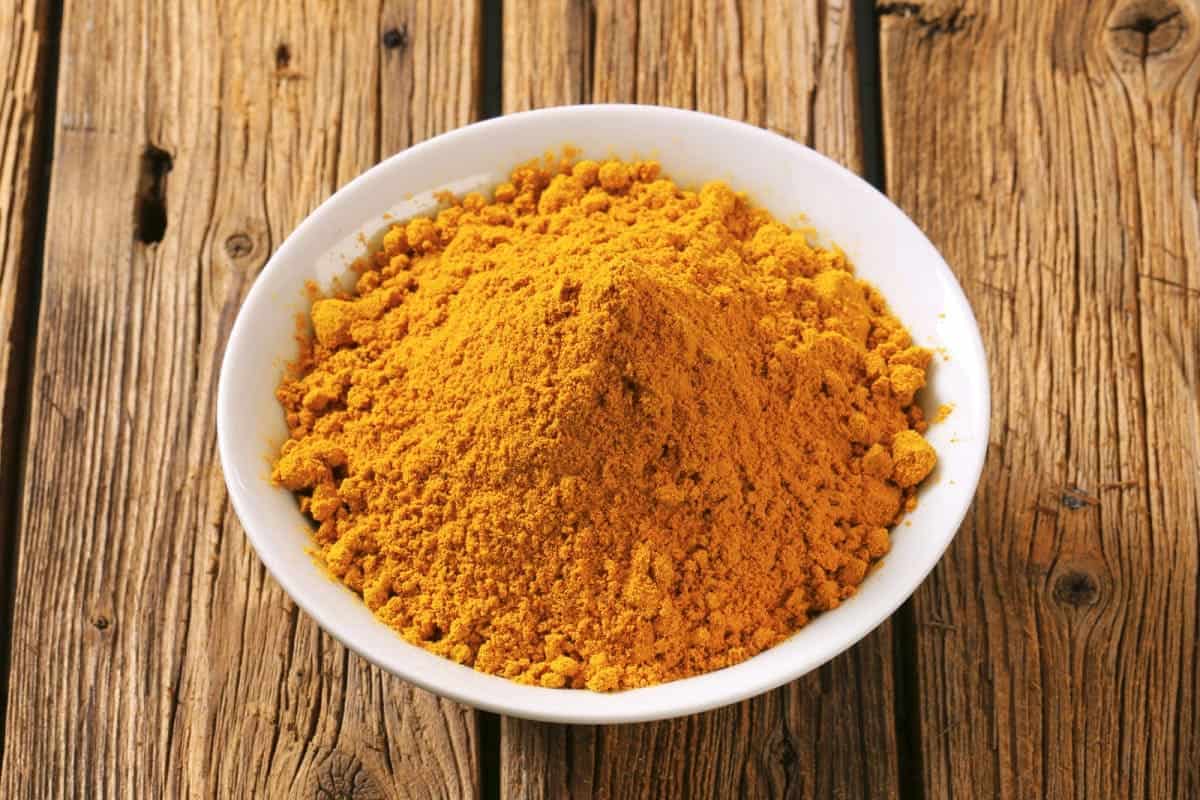

If your dish requires the fenugreek flavor but not the crunch dry fenugreek leaves bring to the table or the freshness the fresh leaves give, use one of the most popular spice blends: curry powder.
Some curry powder products use powdered fenugreek seeds as their main ingredients. If they don’t, you’ll find fenugreek powder listed as an ingredient.
In whichever case, the curry powder will lend some fenugreek flavor to your dish. Curry powder is also known for its earthy flavor profile, enhancing the taste and aroma of your dish. You can also use a suitable curry powder substitute if desired.
However, make sure you don’t use too much of the powder because of the other spices included in the blend.
I suggest you start adding ¼ of the amount of the fenugreek listed in your recipe and then adjust from there. You will most likely not need more than half the amount required for fenugreek.
For instance, add ¼ teaspoon of curry powder to a recipe requiring a teaspoon of fenugreek. If it doesn’t give your dish the taste you’re looking for, add a pinch to avoid adding too much. Then taste and adjust. Repeat until you achieve the desired taste.
Pro tip: I sometimes dissolve my curry powder in olive oil to help bring out the fenugreek flavor and aroma. Simply mix two parts of curry powder and one part of olive oil.
Best for: Curry powder, with its blend of spices like coriander, turmeric, and cumin, can be a versatile substitute for fenugreek leaves in recipes like savory dishes and stews.
3 Best Fresh Fenugreek Leaves Substitutes
What if you don’t have any of the above-listed substitutes for fenugreek leaves? Well, here are three of my favorite substitutes for fenugreek leaves:
1. Kale
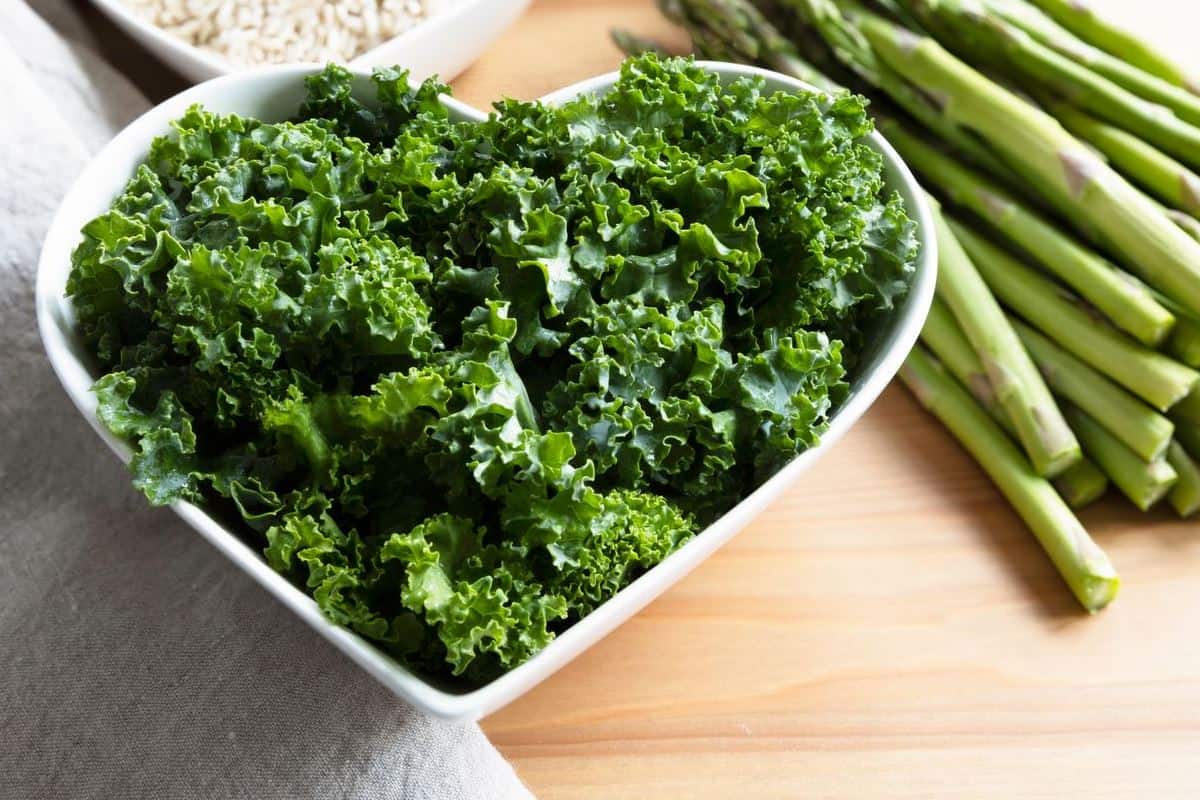

Kale is a green leafy vegetable that closely resembles the leaves of the fenugreek plant in terms of appearance. Not only that, but it also has a slightly spicy, nutty, bitter flavor profile that will ensure you get the right taste and aroma you’re dish needs.
I also love that you don’t have to do any maths when using kale to substitute for fenugreek leaves. Half a teaspoon of the leaves is equivalent to half a teaspoon of kale.
But one thing you have to keep in mind is that kale is slightly more bitter than fenugreek.
What I do is add sugar or other sweeteners to my dish to help balance the flavor and give it the sweet undertones fenugreek is known for. The ratio I use is two parts kale to one part sweetener.
Kale also becomes more bitter when you slice it. Thus, another pro tip I could share with you to help reduce the bitterness is to soak it in water for a minute or two after you chopped, minced, or sliced it.
Best for: Kale can be a nutritious substitute for fenugreek leaves in dishes where a leafy green with a slightly bitter and earthy flavor is needed, such as in salads, casseroles, soups, and stir-fries.
Related: 7 Delicious and Nutritious Kale Substitute Options
2. Mustard Leaves
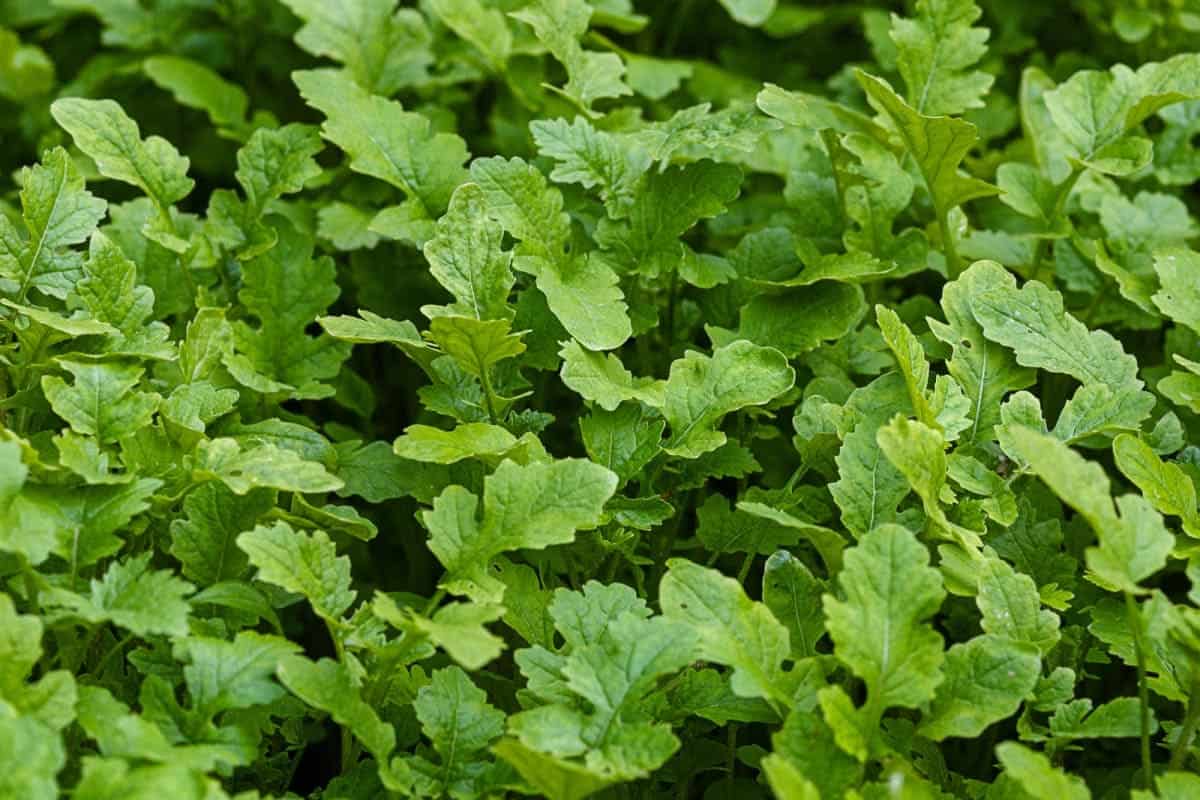

The slight spiciness of the mustard leaf when you bite into it, and its fresh grassy flavor will give your dish and beverages the balance of flavor they need. These leaves won’t overpower any ingredients if you use them properly. You can even combine them with most fresh leaves when preparing salads.
The good news is it isn’t rocket science to replace fenugreek with mustard leaves. Simply follow a 1:1 ratio.
Best for: Mustard leaves can serve as a substitute for fenugreek leaves in dishes requiring a similar peppery and slightly bitter flavor profile like sauces, chutneys, soups, teas, and smoothies.
3. Alfalfa Sprouts
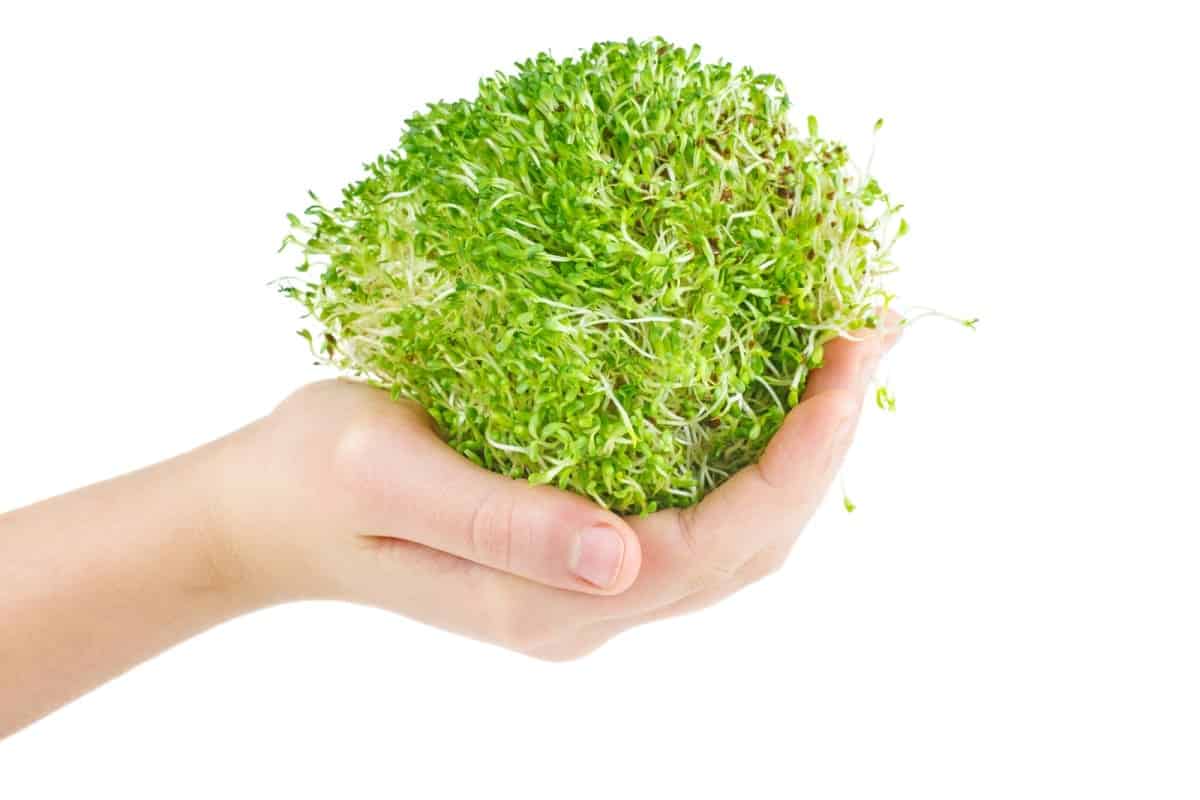

Alfalfa sprout is another fenugreek substitute that won’t overpower your other ingredients because of its milder flavor. It’s your best option if you’re trying to tweak your recipe because you’re cooking for kids or guests who wouldn’t appreciate the slight spiciness of fenugreek.
Even without the spiciness, adding the same amount of alfalfa sprouts as your recipe calls for fenugreek will give its much-needed nutty but slightly sweet taste.
Best for: Alfalfa sprouts can be used as a substitute for fenugreek leaves, adding a mild and slightly nutty flavor to dishes like salads, sandwiches, and wraps.
4 Best Dry Fenugreek Leaves Substitutes
When looking for a suitable substitute for dried fenugreek leaves, I highly recommend these four easily accessible, cheap ingredients:
1. Fenugreek Powder
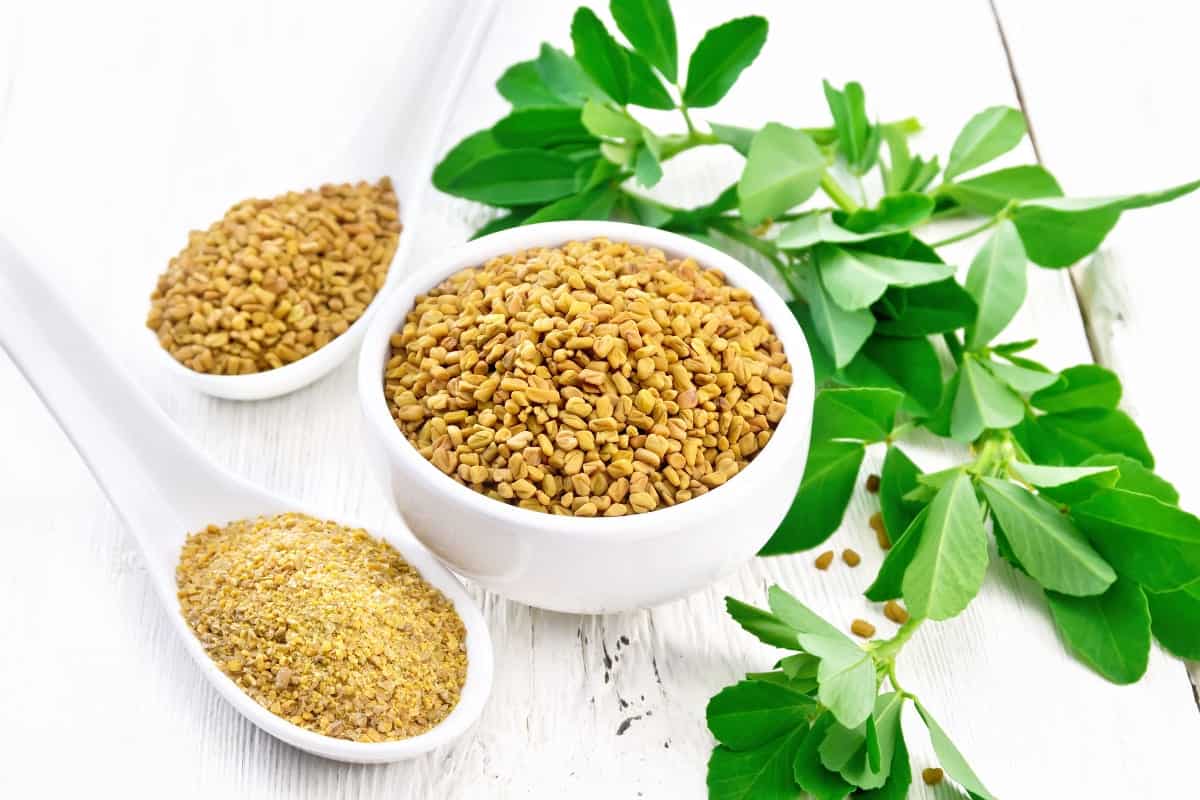

This spice is basically the powdered form of dried fenugreek seeds, leaves, or both. It’s why it isn’t surprising that it’s number one on my list.
The only issue with using it to substitute dried fenugreek leaves is the difference in texture. It’s as simple as saying powdered or ground fenugreek won’t add the crunch some of your dishes might require.
I also want to note that ground fenugreek has a more potent flavor than the dried herb. It’s why you will need to use a lower amount of powdered fenugreek than what’s indicated in your recipe for dried fenugreek.
The ratio that worked well for my recipes is for every teaspoon of dried fenugreek, I use ¼ of a teaspoon of powdered or ground fenugreek. Of course, you can always add more if you find that your dish requires more aroma and flavor.
Best for: Fenugreek powder is an ideal substitute for fenugreek leaves in curries, spice blends, and marinades requiring its distinct earthy and slightly bitter flavor.
2. Yellow Mustard Seeds
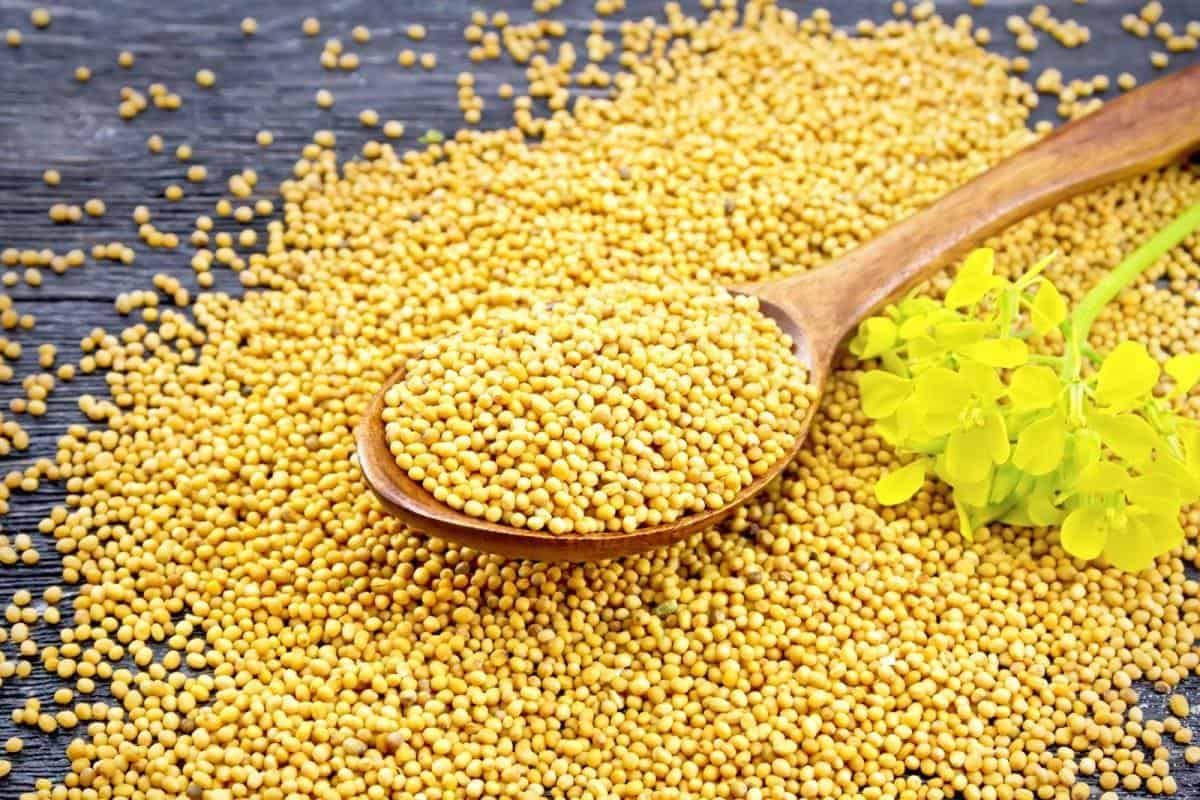

Yellow mustard seeds are one of the most common ingredients used in Westen cooking, so you most likely already have it in your spice rack or cabinet. If not, you won’t have difficulty looking for it in your grocery store.
What I love most about yellow mustard seeds is they have the same spicy, nutty flavor and sweet notes as dried fenugreek. Hence, you don’t have to make any adjustments in the measurement. Simply substitute one cup of dried fenugreek with one cup of yellow mustard seeds.
However, there is one additional step you need to take before adding it to your recipe. You must lightly toast the yellow mustard seeds in your dry pan over low heat. This will help bring out their distinctive flavor and aroma that will surely make mouths salivate!
Best for: Yellow mustard seeds can serve as a substitute for fenugreek seeds in chutneys, sauces, and fish and meat dishes. They provide a slightly different flavor profile with a mild, tangy taste and are often used in pickling, spice blends, and sauces to add depth and texture.
3. Black Mustard Seeds
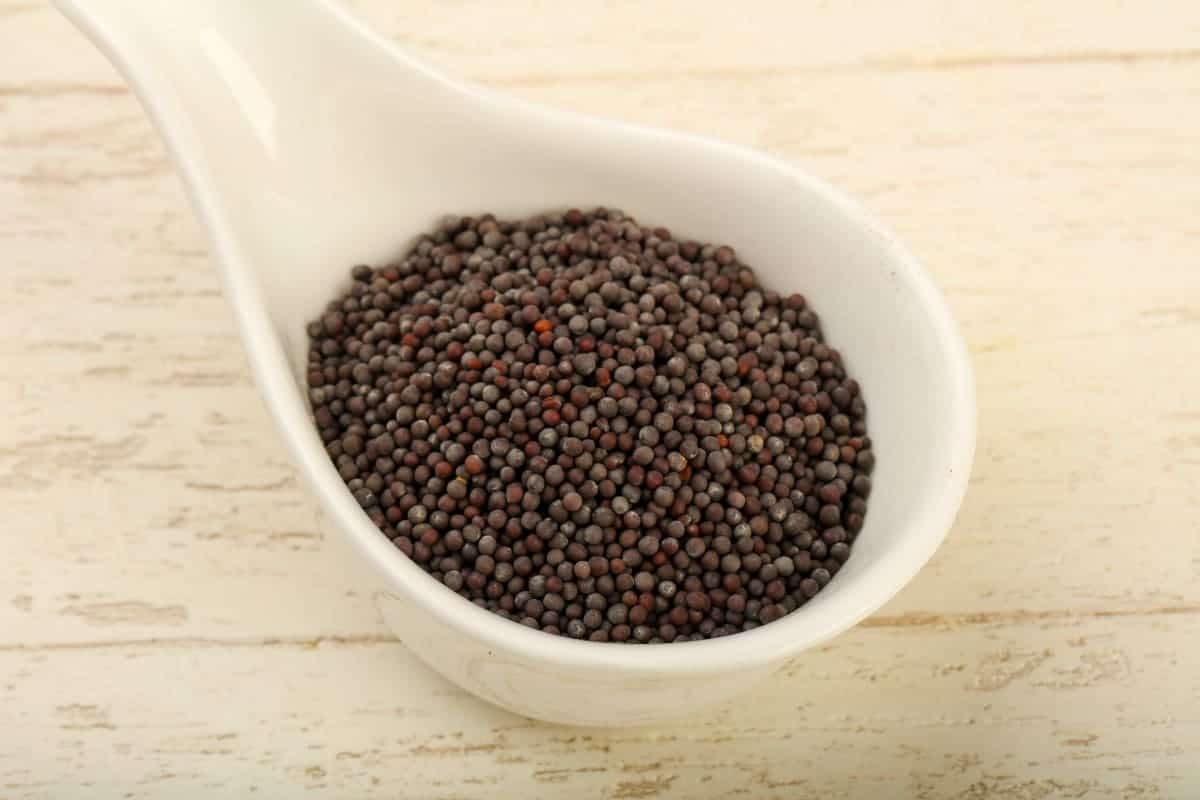

These mustard seeds are commonly used in Indian cuisine because of their stronger flavors and aroma than yellow mustard seeds.
This dried fenugreek leaves substitute is a perfect choice if you want to serve spicier dishes with a more intense earthy, nutty aroma and taste. Just keep in mind that it’s more bitter than fenugreek, so I advise adding it to your dish gradually.
I usually start adding only half the amount of the fenugreek required in the recipe and just add more when I need to. However, you can always balance the bitterness by mixing the mustard seeds with maple syrup.
What I do is after lightly toasting the black mustard seeds, I place them in a bowl with maple syrup. In terms of ratio, I mix two parts mustard seeds with one part maple syrup.
Best for: Black mustard seeds can substitute for fenugreek seeds in Indian cooking for tempering (tadka) in curries, pickles, and spice blends, offering a pungent, spicy flavor with a hint of bitterness.
4. Dijon Mustard
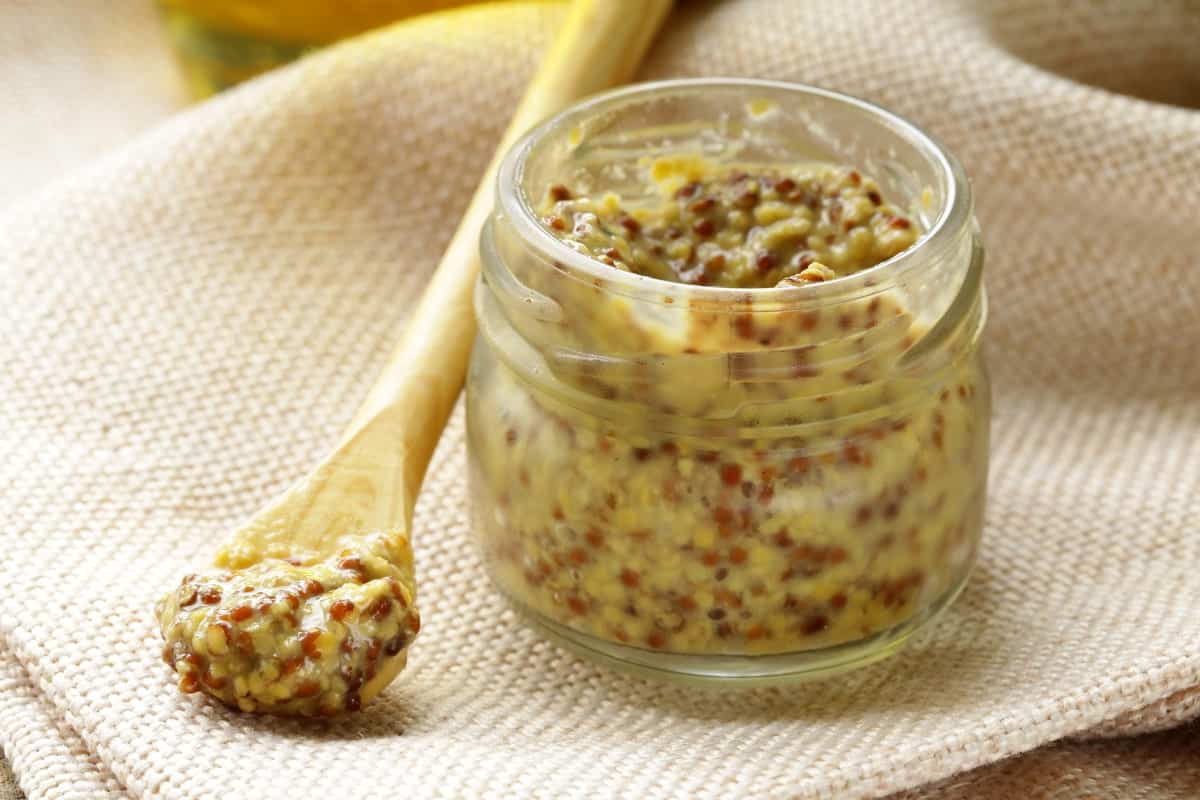

If you’re in a rush, check your cabinet or counter to see if you have Dijon mustard! While different in texture, its sharp, tangy, spicy taste will enhance your dish’s flavors.
When using it as a dried fenugreek leaf substitute, you only need to add a small amount to ensure you don’t end up with too thick sauces, soups, and more. Ratio-wise, there is no exact substitution because of their completely different form.
What I do and suggest is add, at most, a teaspoon of Dijon mustard to whatever recipe you’re following. Start by adding ¼ teaspoon and then add more when needed.
Best for: Dijon mustard can serve as a substitute for fenugreek seeds in marinades, dressings, and sauces, providing a tangy and slightly spicy flavor.
Adding Fenugreek Flavors Without the Fenugreek
Fenugreek can be hard to find in certain months, but it doesn’t mean you need to save that recipe for later! Serve delicious food, chutneys, and sauces using the best fenugreek substitute for your specific recipe you can find in my list above.
I promise you; you won’t be disappointed!
Recipe
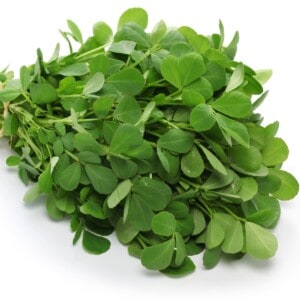

Best Fenugreek Leaves Substitute
Calories: 17kcal
Servings: 1 cup
Do you need fresh or dried fenugreek leaves substitute because you can’t find one? After all, it’s a seasonal herb, so your local grocery can run out of it quickly. Perhaps you forgot to stock up and need to cook dinner already, so you need to use what’s available in your pantry and/or herb garden. Today, I’m sharing with you ingredients you can substitute for dry fenugreek, fresh fenugreek, and both.
Instructions
Best Fresh Fenugreek Leaf Substitute
Best Dried Fenugreek Leaf Substitute
Notes
You can find the video in the post above. If you don’t see a video, please check your browser settings.
Nutrition
Calories: 17kcalCarbohydrates: 4gProtein: 1gFat: 0.2gSaturated Fat: 0.1gPolyunsaturated Fat: 0.1gMonounsaturated Fat: 0.04gSodium: 95mgPotassium: 308mgFiber: 2gSugar: 2gVitamin A: 531IUVitamin C: 4mgCalcium: 47mgIron: 0.2mg
